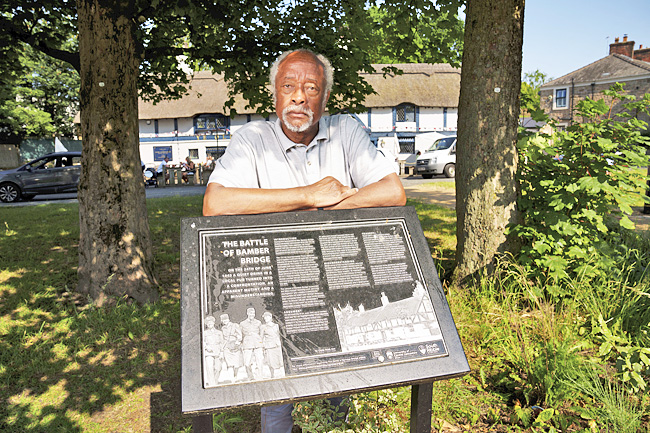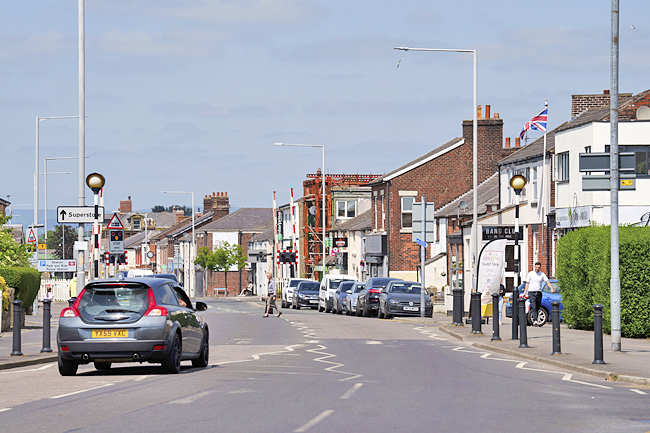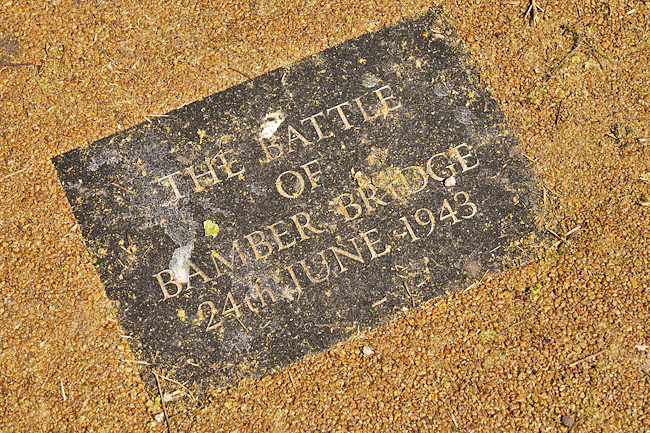BAMBER BRIDGE, ENGLAND (AP) – The village of Bamber Bridge in northwestern England is proud of the blow it struck against racism in the United States (US) military during World War II.
When an all-Black truck regiment was stationed there, residents refused to accept the segregation ingrained in the US Army. Ignoring pressure from British and American authorities, places welcomed the GIs, local women chatted and danced with them, and English soldiers drank alongside men they saw as allies in the war.
But simmering tensions between Black soldiers and white military police exploded on June 24, 1943, when a dispute outside a restaurant escalated into a night of gunfire. Private William Crossland was killed and dozens of soldiers from the truck regiment faced court martial.
When Crossland’s niece learned about the circumstances of her uncle’s death, she called for a new investigation to uncover how he died.
The community has chosen to focus on its stand against segregation as it commemorates the 80th anniversary of what’s now known as the Battle of Bamber Bridge and America reassesses its past treatment of Black men and women in the armed forces.
“It’s a sense of pride that there was no bigotry towards (the soldiers),” said Valerie Fell, who was just two in 1943 but whose family ran Ye Olde Hob Inn, the 400-year-old thatched-roof restaurant where the conflict started. “They deserved the respect of the uniform that they were wearing.’’




EXPORTING SEGREGATION
Black soldiers accounted for about 10 per cent of the American troops in Britain during the war. Serving in segregated units led by white officers, most were relegated to non-combat roles such as driving trucks. US authorities tried to extend those policies beyond their bases, asking pubs and restaurants to separate the races.
Bamber Bridge, then home to about 6,800 people, wasn’t the only place to resist. In a country then almost entirely white, there was no tradition of segregation.
What’s different about it was the desire of local people to preserve their story, said co-director of the Institute for Black Atlantic Research at the University of Central Lancashire Alan Rice.
“If you’re fighting fascism, which these people were, it’s ludicrous, absolutely ludicrous, that the US Army (were) encouraging a form of fascism – segregation,” Rice said.
Clinton Smith, head of the Black history group in nearby Preston, wants people to look more closely at what happened. The history “just can’t be allowed to wither on the vine”.
THE BATTLE OF BAMBER BRIDGE
Despite their friendships with the GIs, villagers weren’t able to head off the violence when Black soldiers, frustrated by their treatment and angry about race riots in Detroit, faced off with military police outfitted with batons and sidearms.
On that hot June night, Private Eugene Nunn was sitting at a beverage establishment when a white military police officer threatened to arrest him for wearing the wrong uniform. British soldiers and civilians intervened.
“Everyone was saying, ‘Leave him alone. He just wants a drink. It’s a hot day’,” Fell said as she recounted her mother’s story. “People just didn’t understand this viciousness.”
When Nunn left, the police were waiting. Tempers rose. A bottle smashed against the windshield of the police Jeep. Things escalated and it wasn’t until 4am that order was restored.
Military authorities sought severe penalties – 37 Black soldiers were charged with mutiny, riot and unlawful possession of weapons. Some 30 received sentences of between three and 15 years in prison, combined with loss of pay and dishonourable discharges. As the allies prepared for D-Day, many had their sentences shortened so they could be cycled back into the war effort.
While the court martial criticised the white officers for poor leadership, no records indicate they or the military police were disciplined.
US Air Force Academy graduate and retired professor of history at Radford University in Virginia Ken Werrell studied the proceedings and reviewed military records for an article published in 1975. He told The Associated Press the Black soldiers were badly treated.
LONGSTANDING CHANGE
But the broader story is that senior generals, focused on improving morale and performance, quickly ordered changes in the treatment of Black troops. Many of the officers commanding Black units were replaced and the army deployed more racially mixed police patrols.
“The Bamber Bridge affair was more than just a minor incident in World War II,” Werrell wrote.
“It was one of a number of incidents in the Black’s and America’s continuing crusade for freedom.”
President Harry Truman in 1948 ordered the end of segregation in the military, though that took years to fully achieve. Lloyd Austin, a Black man and retired four-star general in the Army, is now secretary of defence.
That progress was too late for Crossland, a former railroad worker who was 25 when he died. Court martial evidence said only that he was found gravely wounded, with a bullet near his heart. Officers said they believed he had been caught in cross-fire between two groups of Black soldiers.
RE-ASSESSING HISTORY
Nancy Croslan Adkins, the daughter of one of William’s brothers, said she was never told about the circumstances of her uncle’s death. The family later changed the spelling of its last name.
Adkins, of Upper Marlboro, Maryland, wants to know more about what happened.
“Having dealt with direct discrimination myself by integrating the school system in North Carolina, and the racial injustice that my parents faced, I would love an investigation,” she said.
Spokesman for the US Embassy in London Aaron Snipe said he couldn’t prejudge any military decision, but President Joe Biden’s administration has shown a willingness to “right the wrongs of the past”.
Earlier this month, the US Navy issued a formal apology to the families of 15 Black sailors who were dishonourably discharged in 1940 after complaining that they were forced to wait tables.





